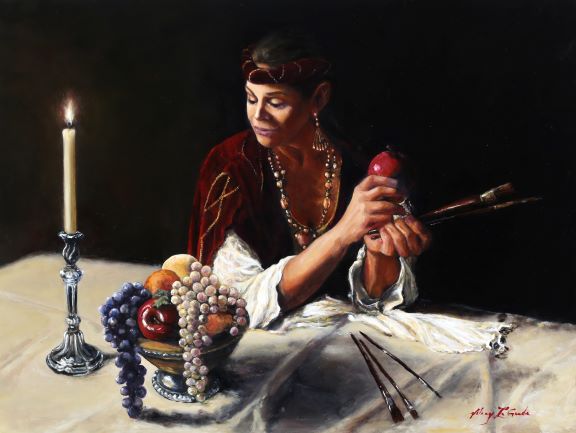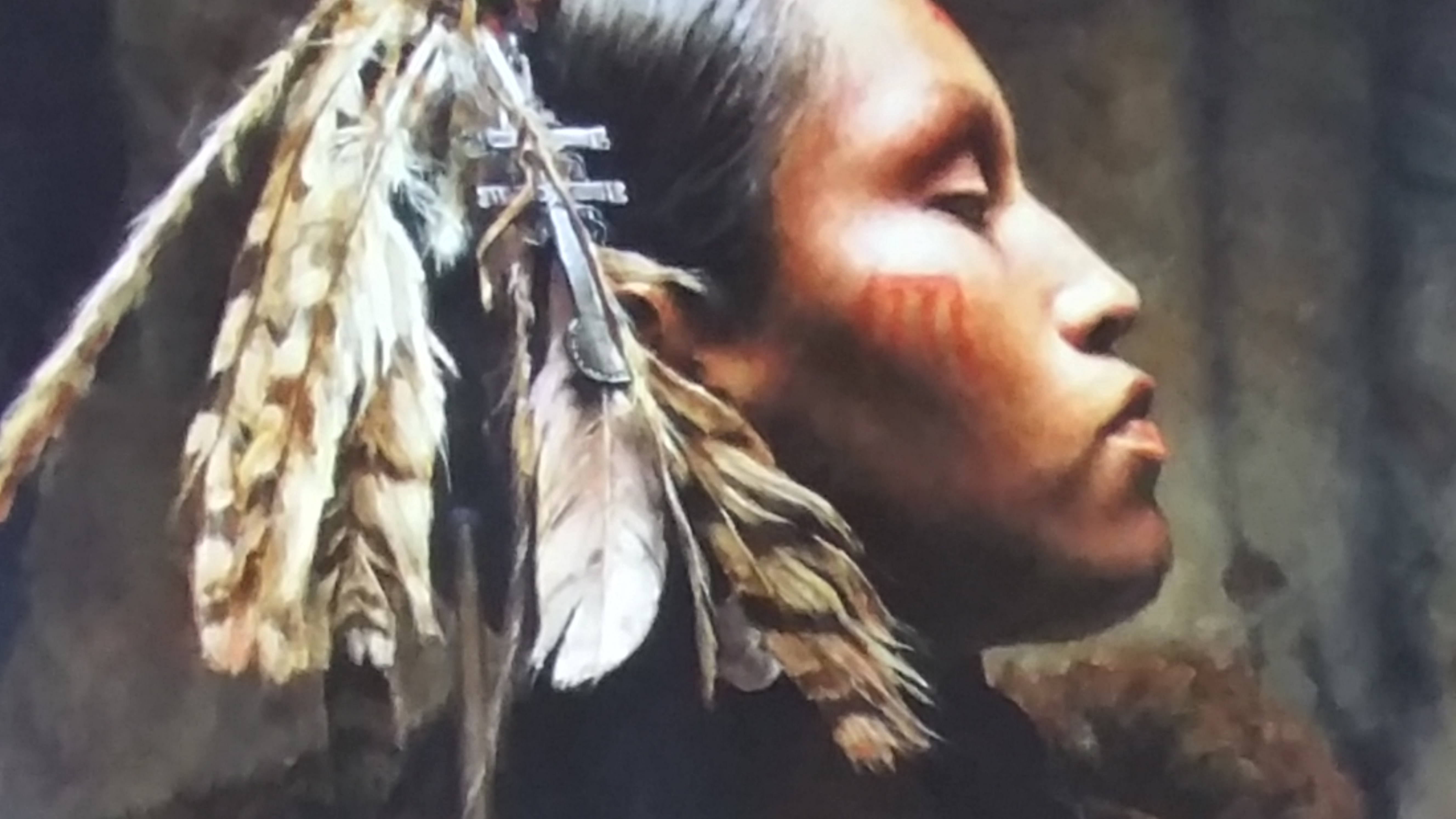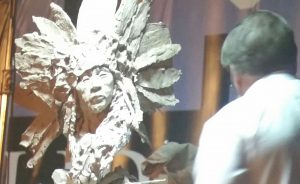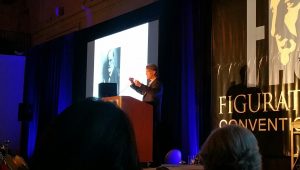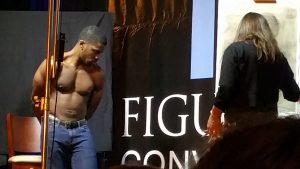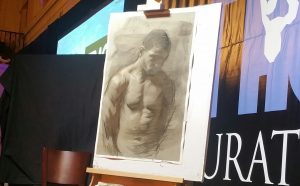Today started with a sculpting demonstration by John Coleman. John is a member of the Cowboy Artists of America and has spent the past 50 years sculpting and painting. He used clay and plasticine to shape a child’s head, then altered it to form a woman’s head, and lastly altered it to create a man’s head.
John said an artist’s brilliance appears only for a couple of minutes a day. Therefore, it is critical that you become skilled and capture those brilliant moments as they appear.
He utilizes modern technology to create his monumental sculptures. For example, he recently created a 17-foot bronze statue by sculpting a five-foot tall clay maquette. He then used a 3D printer to expand the statue to a 17-foot tall styrofoam statue. He coated the foam structure in clay and then coated the clay surface in rubber to create a mold.
Next, Steven Assael gave a presentation entitled Evolution. His basic argument was that a great drawing is the essential basis for a great painting. Drawing is the foundation for everything visual. It is important that when you are working on a two dimensional surface, you can only see three sides of a cube at any time. Therefore, you have to create the illusion of completeness.
Philosopher Stephen Hicks gave a presentation on why art became ugly. He described what was happening in the world when classicism went off the rails and devolved into abstract art. Artists at the time of World War I, World War II, and the atomic age had difficulty telling the story of what was happening. They turned to abstract art to express their feelings. Modern society has created alienation from others, alienation from reality, and alienation from one’s self. It was simpler when religion guided every aspect of our lives. As man became more intelligent, and as the world became grotesque, art soon reflected this change. He quoted Jackson Pollock who said ” Modern art to me is nothing more than the expression of contemporary aims of the age that we live in….the modern painter cannot express this age, the airplane, the atomic bomb, in the old forms of the Renaissance or of any other past culture. Each age finds its own technique.”
Hicks notes that today’s revival of representational art is poking its finger in the eye of the recent abstract era.
The last demonstration of the day was by Juliette Aristides. Juliette is the founder of the Aristedes Atelier at the Gage Academy of Art in Seattle. She is recognized as a Living Master by the Art Renewal Center. She gave a demonstration of figure drawing. Her quote for the day was that “[T]alent is just another name for a deep love of art.” She says it takes both skill and practice to attain the goals you set for yourself in art.
She discussed steps to achieve a great drawing. First, set your easel, as Leonardo DaVinci described, three times as far back as the subject is tall so you can see the entire subject at a glance. Next, begin a block-in with a light charcoal stroke to present abstract shapes to form a loose figure. Next, work your drawing so that the shape and form begins to settle. Start using lights and shadows to develop the form. Free yourself to use large corrections as needed. Next, use gradation on a value-scale of core shadow, half tones, and light to model the form. Remember that the larger shapes dictate the smaller shapes. Next, work in the details and particulars. It is important to remain patient and delay, for as long as possible, the particulars so you are certain of the dimensions and proportions.
